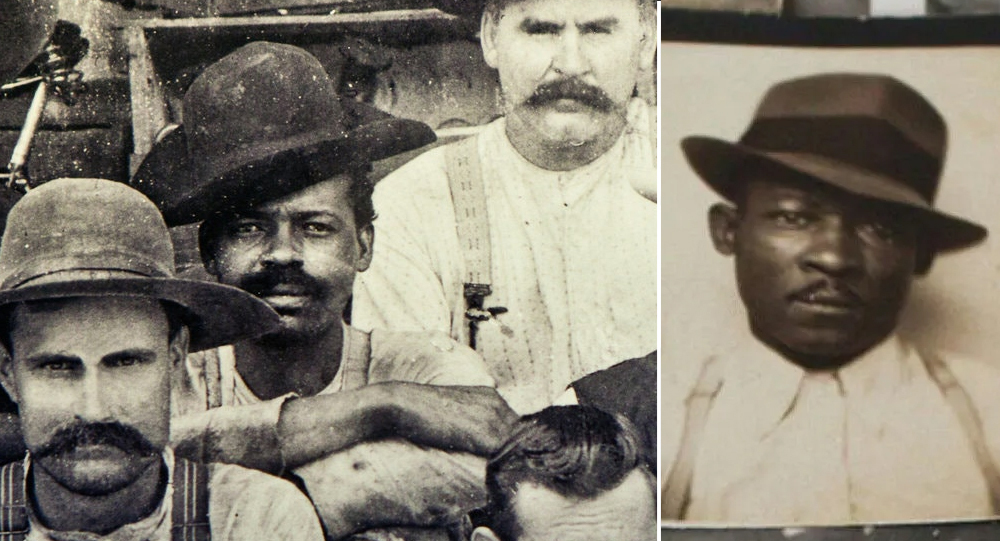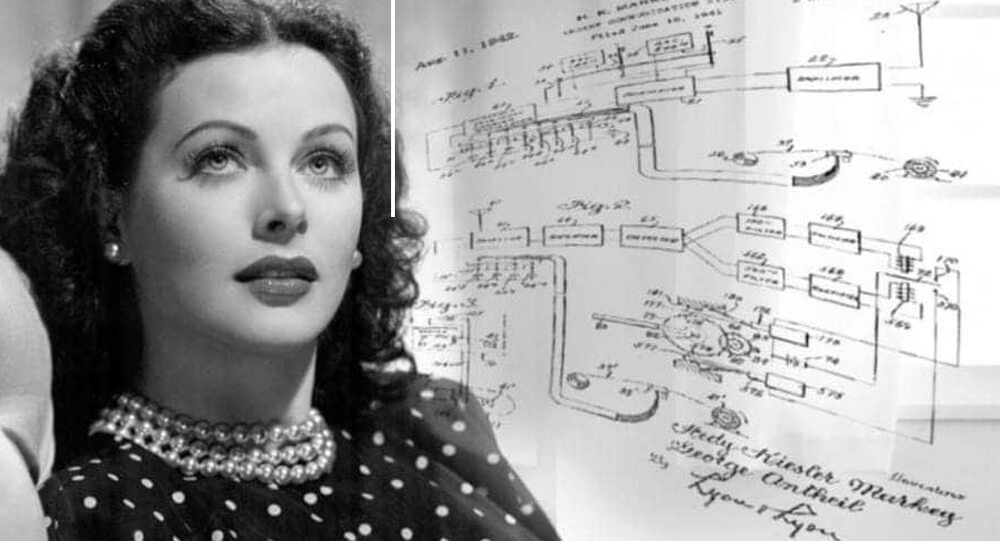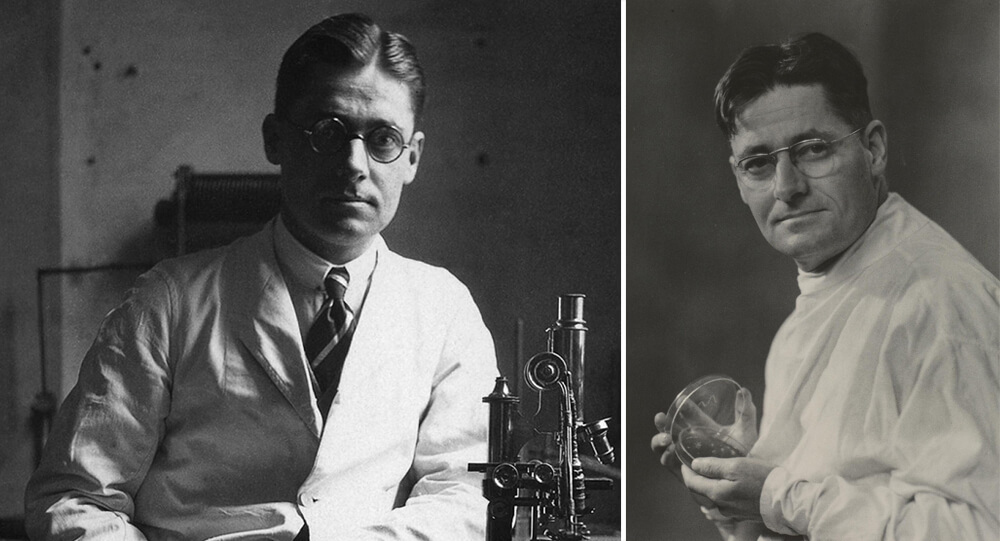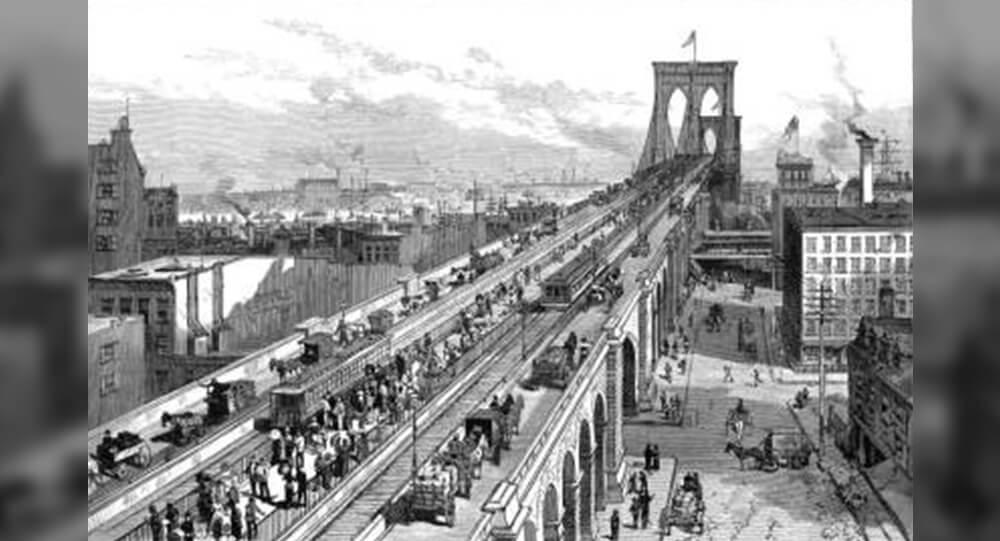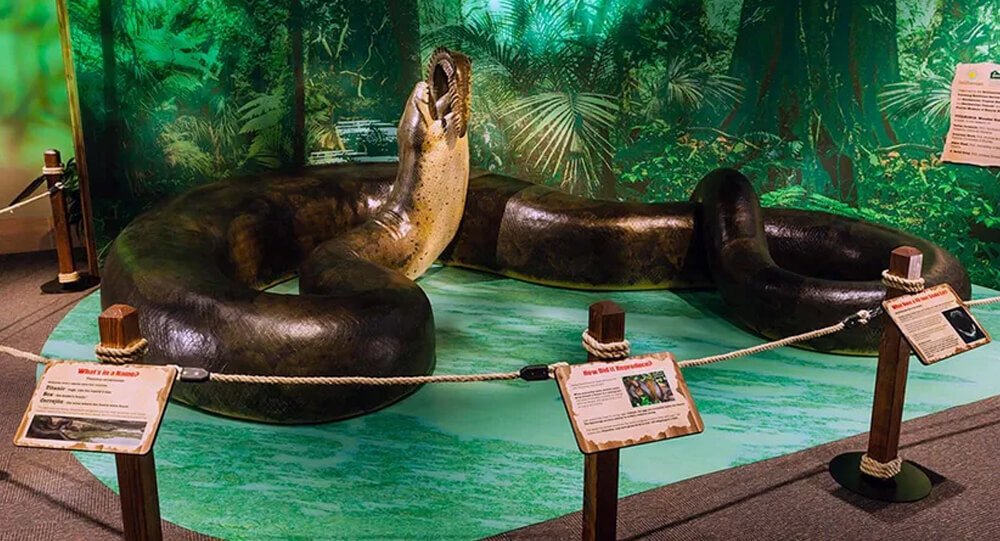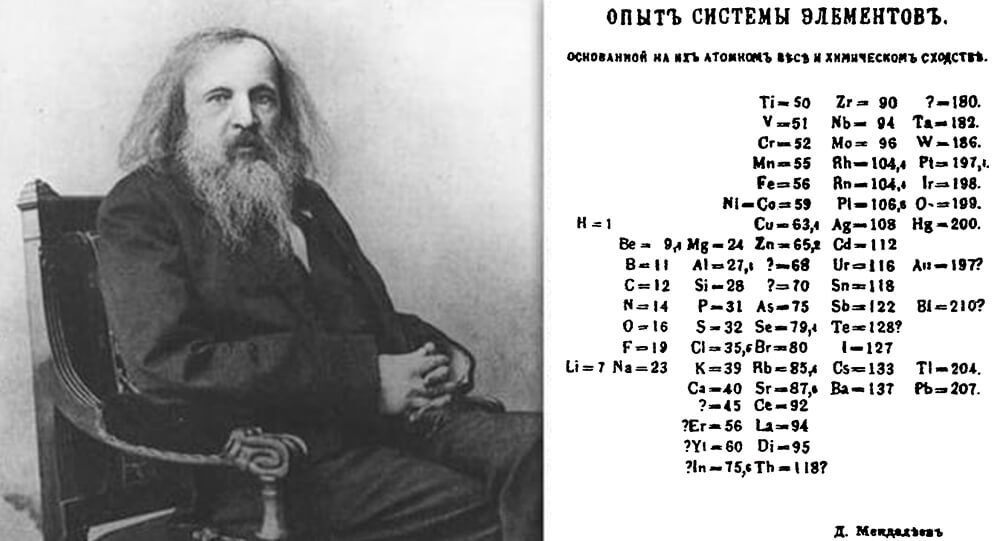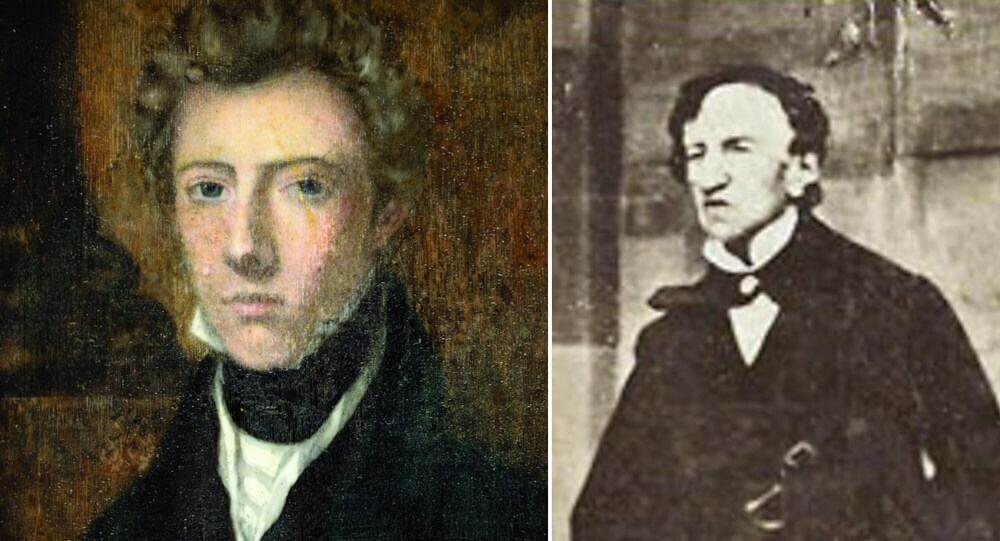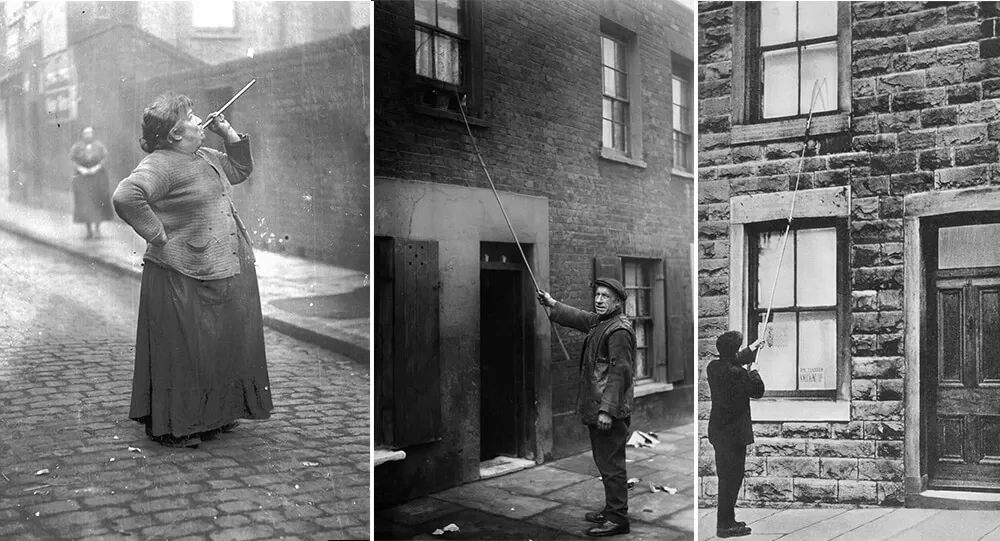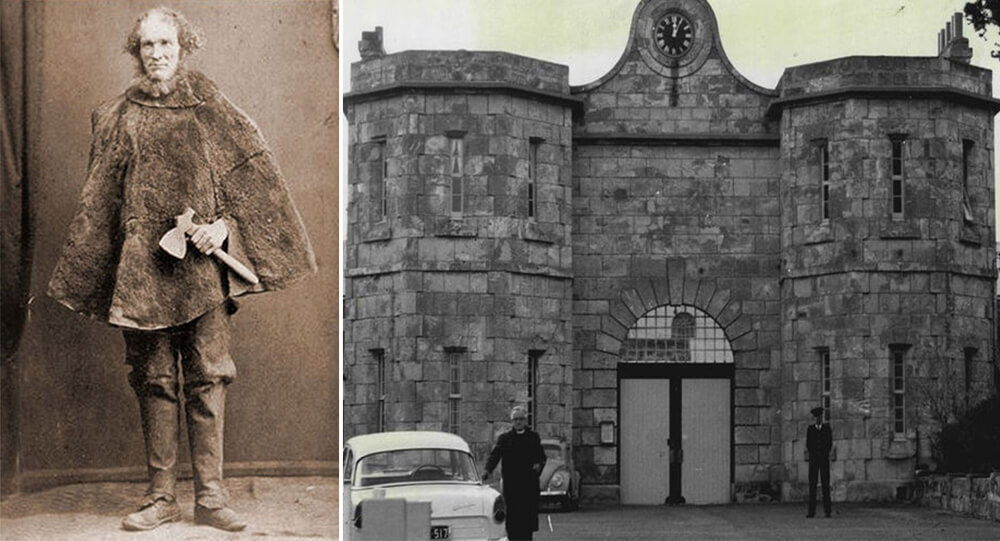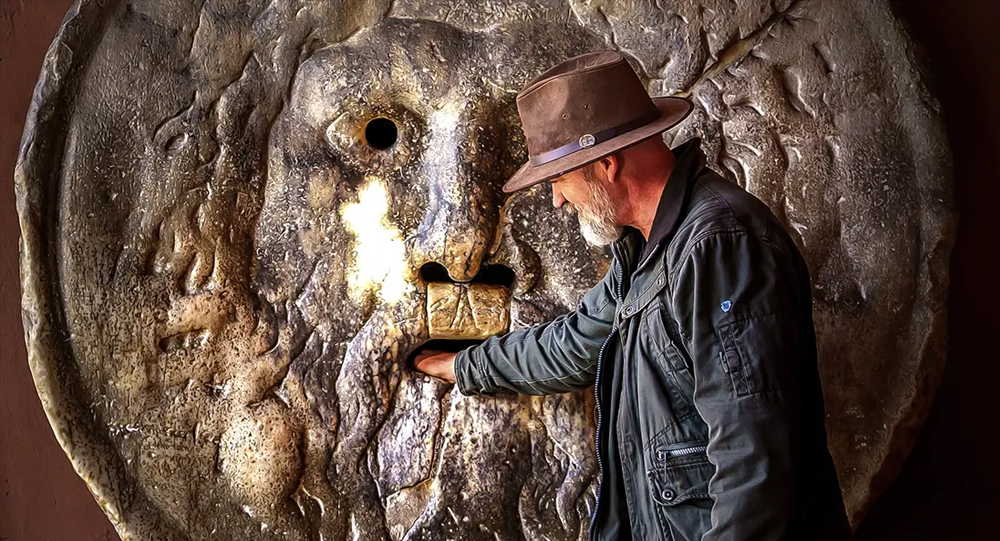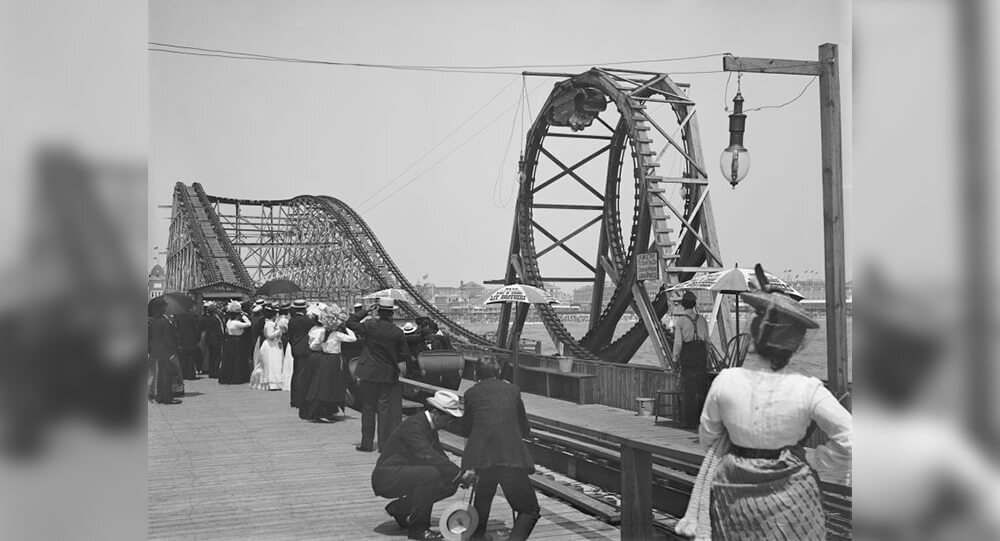
One of the most popular forms of entertainment in the world is riding roller coasters. Sometimes, people will wait for hours to experience an old classic or the newest thrilling ride.
People ride and enjoy roller coasters for a variety of reasons: they like the speed, the perceived danger, and, like a small child riding a wagon too quickly on a curved sidewalk, they enjoy being afraid.
Strangely enough, the roller coaster was invented primarily for none of these reasons. Immorality served as the driving force behind the creation of the roller coaster in the late 1800s.
LaMarcus Adna Thompson was searching for a past time that would attract Americans away from the taverns, gambling and dancing halls, and brothels that were growing more and more popular as the country grew more and more prosperous after the Civil War. She believed that America was both creating and rushing into a den of iniquity.
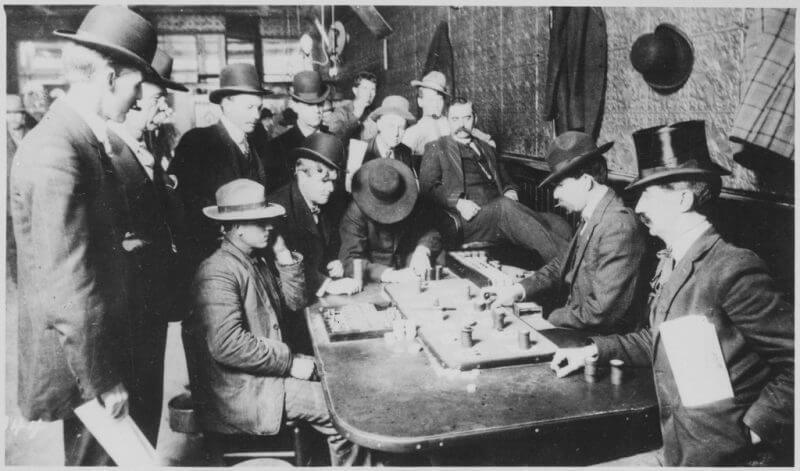
Thompson, who moved to Elkhart, Indiana, after being born in Ohio, invented a machine that makes seamless women’s stockings and other hosiery. Thompson became wealthy thanks to this company and his patent. Because of his poor health, he retired early and received money from his patent.
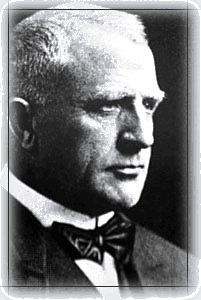
Like many other Americans of the era, Thompson was a devout religious man who worried that the nation’s emerging affluent and urban culture was unquestionably harmful. He desired to take action in this regard.
Thompson was inspired by something entirely unrelated to women’s underwear while on a leisurely trip through the tranquil Pennsylvanian hills.
Thompson saw individuals enjoying themselves on an abandoned mining railway in the peculiarly named town of Mauch Chunk in the state’s east.

The purpose of the Mauch Chunk railway was to move coal from the surrounding Lehigh River docks to Bethlehem’s steel mills.
As the area’s coal mines started to disappear, the railway was transformed into a vacation destination. Coal carts were pulled up nearby Mt. Pisgah by mules on the nine-mile railway in the early 1800s.

The railway was extended to about eighteen miles later in the 19th century, and a steam engine took the place of the mules. But the majority of the track was a gravity-assisted switchback.
Remember, these were the days before cars and airplanes, when nothing made by humans moved as quickly as the cars as they rolled down the track. At times, the cars’ speeds were much faster than those of a train or a running horse.
The railway was an exciting attraction for tourists who came to the hills around Mauch Chunk. There was a 600-plus foot “drop” at the end, more of a slope, but nothing like it at the time, which is why some people called it “harrowing.” By the time LaMarcus Thompson visited, tourists paid one dollar (not cheap for the time) for a ride on the railway, which took 80 minutes to complete.
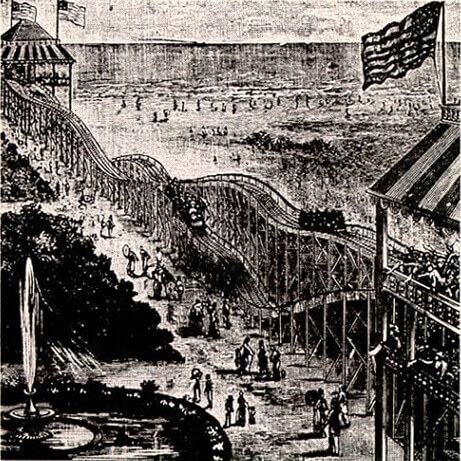
Thompson got the idea from this. He sketched out designs for a scale model of the switchback railway he had witnessed.
The “train” cars themselves and a ratchet mechanism to stop the trains from rolling backward were two features he had observed in Pennsylvania. He created the well-known wooden frame structure and received a patent for it.
In the spring of 1884, Coney Island, New York, saw the construction of the first Thompson “roller coaster.” Originally developed as a resort in the early 1800s, Coney Island boasted theaters, a racetrack, restaurants, and, much to the chagrin of those who held differing opinions from Thompson, a large number of taverns and bordellos by the time the Civil War ended.

These “Houses of Pleasure” were illegal, but as long as everything was kept appropriately covert and organized, most people accepted them with a knowing wink.
It was for this reason that Thompson selected Coney Island.
He believed that his “Switchback Railway” would keep people out of the bars and brothels, into the open air, and with their families.

A nickel was the cost of a ticket. The maximum speed is a matter of some dispute, but it was not more than ten miles per hour. Ten miles an hour was fast, again, except in the case of a closed-in train and a horse, both of which very few people in Coney Island had ever ridden.
Bicycle ownership was not common at the time, and neither were cars or airplanes. Thompson’s original ride measured six hundred feet in length and fifty feet in elevation.
The cars began at the top and descended the whole length of the track, passing through a few small dips.
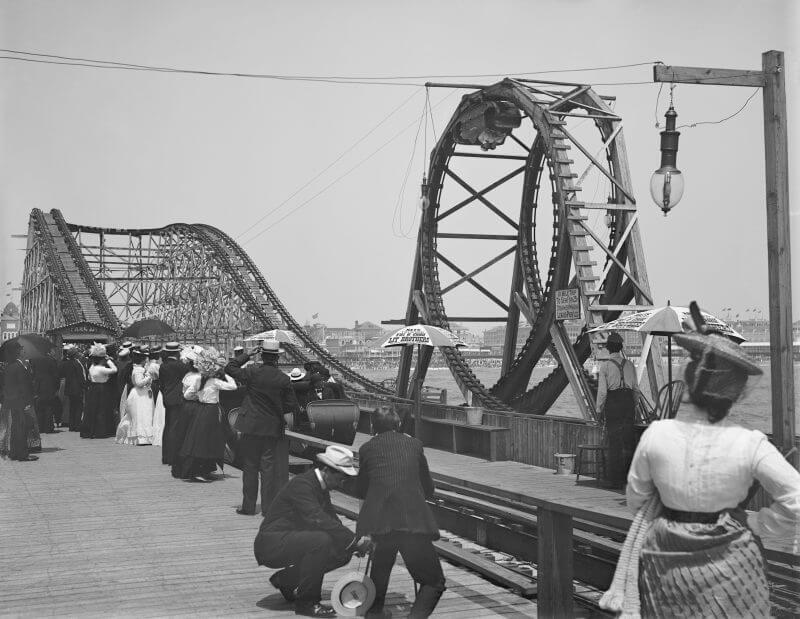
The riders reached the other end, where gravity propelled them up a second hill and back to the beginning. There would be two train cars running at the same time.
Thompson was earning about six hundred dollars a day in three weeks, which is fifteen thousand dollars a day today! Thompson quickly began to make advancements and patent them. Others soon began building their own switchback railroads.
They became well-liked since many of them accelerated the pace. Speed was progressively increased by Thompson’s amusements, which he started to construct across the nation, but he concentrated on adding novelty features like lights, tunnels, artificial mountains, “scenery” beside the track, etc.

Thompson’s original rides are directly related to Disney World’s well-known Space Mountain ride, which features flashing lights and dark tunnels.
In the late 1880s, a type of winter ride that featured a toboggan on rollers that was pulled to the top of a snowy hill, akin to Thompson’s railway, gave rise to the popular term “roller coaster.”
As a matter of fact, Thompson did not create the roller coaster. Before Thompson’s ride, similar gravity rides had briefly been available in France, but they never really took off and quickly vanished.
Thompson accumulated significant wealth by the time of his death in 1919, at the age of 71. Though nearly everyone was having the time of their lives while riding his rides, Thompson’s rides never quite took the place of bars and bordellos.

The Horrific story of Ariel Castro and the Cleveland abduction
Cleveland abduction victims Gina DeJesus, Michelle Knight, and Amanda Berry were forced to live in Ariel Castro's house of horrors for 10 years. He raped and beat them until they escaped in 2013.

Nearest Green, America's first known Black master distiller
Nathan "Nearest" Green was an African-American head stiller who is now more frequently referred to as a master distiller. He was renowned for imparting his distilling knowledge to Jack Daniel, the creator of Jack Daniel's Tennessee whiskey distiller, after Jack Daniel was freed from slavery following the American Civil War.

June and Jennifer Gibbons The silent twin who Only Spoke to Each Other
Identical twins June and Jennifer Gibbons were born on 11 April 1963 at a military hospital in Aden, Yemen where their father worked as part of the Royal Air Force.

Hedy Lamarr, A Hollywood actress who also a mathematician and inventor
Hollywood actress Hedy Lamarr was also a mathematician and the inventor of frequency hopping spread spectrum, a technology still used for bluetooth and wifi

Blanche Monnier: Imprisoned For 25 Years For Falling in Love
Blanche Monnier, she was a French woman noted for her beauty, she wished to marry an old lawyer that her mother disapproved of, so she locked her in a small dark room in her attic for 25 years.

Philippines, the largest supplier of Nurses in the World
Philippines is the world’s largest supplier of nurses, supplying roughly 25% of all overseas nurses worldwide.

How did Howard Florey discover penicillin
Penicillin was discovered by Alexander Fleming, but he never attempted to turn it into an antibiotic. It wasn't until ten years later that Howard Florey discovered Fleming's obscure paper and understood the mold's potential. Up to 200 million lives may have been saved as a result of Florey's work.

Max Headroom Incident: America’s Creepiest TV Hack
In 1987 a man hijacked a television station during an episode of Dr. Who and wore a Max Headroom mask and uttered nonsense, and he still hasn’t been caught

Why the Brooklyn Bridge Was Once Crossed by 17 Camels and 21 Elephants
On May 30, 1883, a rumor that the Brooklyn Bridge was going to collapse caused a stampede, which killed at least at twleve people. To prove the bridge was safe, P.T. Barnum led a parade of 21 elephants over it.

Titanoboa cerrejonensis, fossils of the world’s largest species of snake
In 2009 in a coal mine of Columbia, scientists discovered fossils of the world’s largest species of snake. The species is called “Titanoboa cerrejonensis,“and it is from around 60 million years ago. It would have had measured about 48 feet long and weighed about 2,500 pounds

Archaeologists Uncover 2,000-Year-Old Amazonian Cities Using Lidar Technology
Deep in the Ecuadorian Amazon, archaeologists have uncovered an ancient network of urban settlements once inhabited by the Upano people about 2,000 years ago. Using cutting-edge lidar technology, these discoveries reveal a highly organized society featuring sophisticated agricultural systems, drainage canals, and extensive road networks. This transformative find challenges long-held assumptions about ancient Amazonian societies and sheds light on a complex civilization thriving in one of the world’s most biodiverse regions.

The incredible story of Julia "Butterfly" Hill and her legacy
American environmental activist Julia “Butterfly” Hill lived in a 1500-year-old California Redwood tree for 738 days to prevent it from being cut down by the Pacific Lumber Company. The Simpson’s episode “Lisa the Tree Hugger” was inspired by Hill’s story.

The 440-pound bear named Wojtek and his World War II battle against the Nazis
Polish troops raised an orphaned bear cub during WWII. He enjoyed drinking beer, and was trained to salute. He became officially enlisted as a member of the forces, and helped carry artillery during battle.

Saudi Arabia camel carvings dated to prehistoric era
Archaeologists were shocked to discover that a series of camels carved into desert rock faces in north-western Saudi Arabia are actually prehistoric, dating from 7,000-8,000 years ago - before either the Pyramids of Giza or Stonehenge were built.

How Dmitri Mendeleev Developed the periodic table of the elements
1850 Dmitri Mendeleev walked almost a thousand miles to Moscow so he could apply for the University of Moscow. Although he was not accepted, he walked to St. Petersburg where he was accepted, And with that education, he developed the the periodic table of the elements

Nordlingen, The Town Inside A Meteorite Crater With Millions Of Meteorite Diamonds
The German town of Nördlingen is embedded with 72,000 tons of microscopic diamonds. About 15 million years ago, a meteorite hit this region, and the impact created a massive depression and formed rocks containing diamonds, glass, and crystals. The town was built in the impact crater sometime around 898 CE.

The mysterious secret of Dr James Barry
Before women were allowed to enroll in medical school, Margaret Ann Bulkley studied medicine and assumed the identity of Dr. James Barry for 56 years while dressing as a man. After 46 years of service as an army doctor officer, her secret was not made public until after her death in 1865.

Ancient Egyptians Had Pregnancy Tests Over 3500 Years Ago
The ancient Egyptians used a pregnancy test that involved potentially pregnant women peeing on barley and wheat seeds. Plant growth indicated pregnancy: barley for a boy and wheat for a girl. Later tests revealed that pregnant women's urine causes plant growth 70% of the time, whereas non-pregnant women's urine does not.

Iranian inmate dies from happiness after finding out he will not be executed
An Iranian man who was convicted of murder reportedly died from happiness after learning that his death sentence was being commuted.

Knockers-up: waking up the Industrial Britain's Workers in 1900-1941
Before alarm clocks were invented, there was a profession called a knocker-up, which involved going from client to client and tapping on their windows (or banging on their doors) with long sticks until they were awake. It lasted into the 1920s.

15 interesting facts about Queen Elizabeth II
Queen Elizabeth II, who ruled Britain for 70 years, has away at the age of 96. She was the country's longest-reigning monarch. Here are some little-known facts about her.

The Baltic Way: the longest unbroken human chain in history
On August 23, 1989, about 2 million people from Latvia, Estonia, and Lithuania formed a human chain that united all 3 countries to show the world their desire to escape the Soviet Union and the communism that brought only suffering and poverty. This power stretched 600 km.

The Forgotten Story of Semipalatinsk and the Soviet Nuclear Experiments
Between 1949 and 1989, the Semipalatinsk Test Site in Kazakhstan became the primary location for Soviet nuclear weapons tests, exposing millions of unsuspecting villagers to radioactive fallout. Known as the “Polygon of Suffering,” this remote desert witnessed 456 nuclear detonations that caused widespread health crises, birth defects, and generational genetic damage. This article narrates the chilling legacy of Semipalatinsk, unveiling the human cost of Cold War arms development and the ongoing struggle for healing and recognition in Kazakhstan.

Moondyne Joe: The story of Australia's most notorious prison escapee
A man named Joseph Bolitho Johns (A.K.A Moondyne Joe) broke out of Australian prisons so many times that the police were compelled to build a special cell just for him. He escaped from that as well.

The Mouth of Truth: Ancient Rome’s Legendary "Lie Detector" That Bit Off Hands
Discover the chilling legend of the Mouth of Truth (Bocca della Verità) in Ancient Rome—a massive carved stone face believed to bite off the hand of anyone who lied while inserting their hand into its gaping mouth. Uncover the truth behind its eerie reputation and how this ancient artifact became a symbol of honesty and fear.

